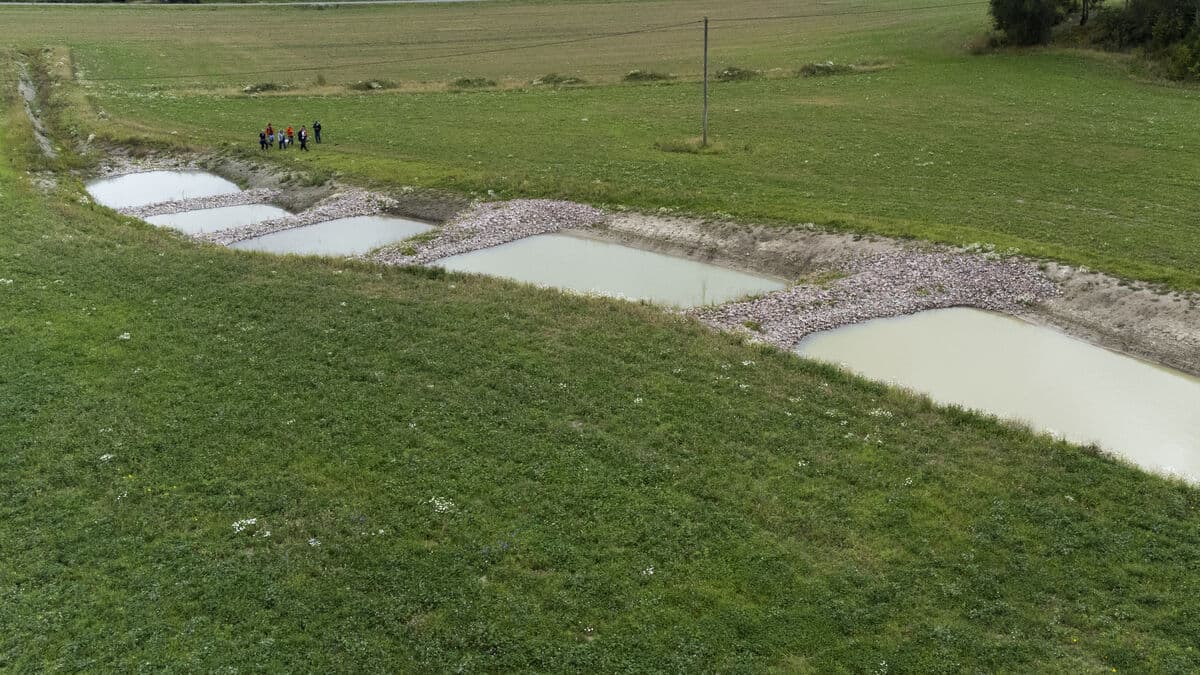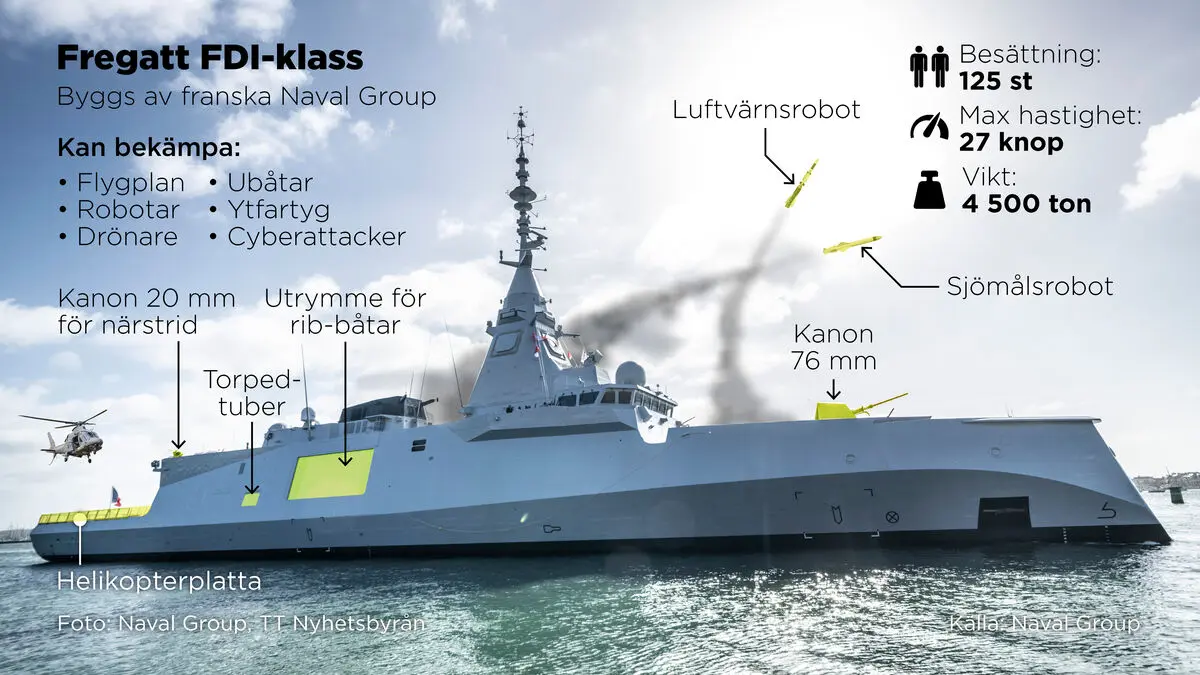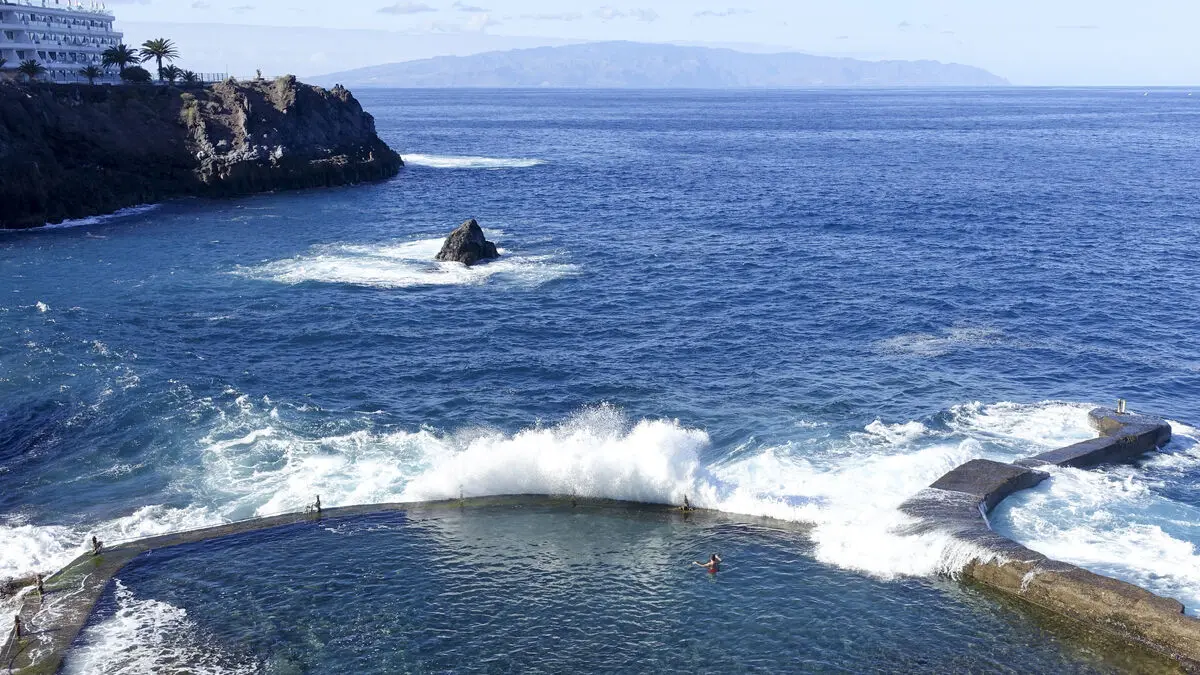Between two fields outside Nyköping lies a series of small ponds like a gray-blue mosaic. It looks like something that has moved out of a park, but it is a phosphorus pond – a type of wetland adapted to capture excess nutrients from the surrounding soil so that it is not transported further to the Sätterstaån River and ultimately to the already eutrophic Baltic Sea.
The pond was built in late autumn 2024 and is farmer Erika Olsson's second wetland. The first is a different kind, built on a long, narrow plot that used to be a field, but where no real harvest was ever obtained. Today, a shallow mirror of water shines and on the edge are visible hoof prints from deer and moose that have come to drink.
Great interest
The dry and hot summer of 2018 made her start thinking about water in a new way.
2018 was a wake-up call for me. We sowed twice and got no harvest. We had no feed for the animals, we called the slaughterhouses and they were full. If we are going to be more long-term in our farming, we need to get more water in.
She is not alone. There is great interest among farmers in creating wetlands, says Markus Hoffman, sustainability expert at LRF, both as a climate measure and because it is simply beautiful to look at.
When LRF asked its members about their attitude towards wetlands, many responded that they would be happy to create them if they received help with planning, administration, and applying for permits and money.
Erika Olsson received help from the Nyköpingsåarnas Water Conservation Association and the EU project BaltCOP. There are some of the country's around 50 so-called local action coordinators, who help farmers with planning and finding their way through the jungle of permits and subsidies.
It is a new invention in Environmental Sweden that has been proven to work, says Markus Hoffman.
Unfairly singled out
Eutrophication in lakes and oceans occurs when the plant nutrients nitrogen and phosphorus leak out. In the Baltic Sea, this amounts to around 100,000 tonnes of nitrogen and 3,000 tonnes of phosphorus per year. Agriculture is the main cause of nutrient leakage that leads to eutrophication, but transport, emissions from sewage treatment plants and industry also contribute to the emissions that affect the marine ecosystem.
Many farmers often feel unfairly singled out as environmental criminals, says Markus Hoffman.
Only in the 1980s and 90s did the eutrophication issue with nutrient leakage and now 30 years later they are not only environmental criminals but climate criminals. Wetlands are a measure that everyone can understand.
But what is great about wetlands is that they are multifunctional. Many environmental and climate measures in agriculture may only have climate benefits or only water purification benefits, with wetlands you can tick all the boxes. In that way, you can say that wetlands rarely go wrong.





